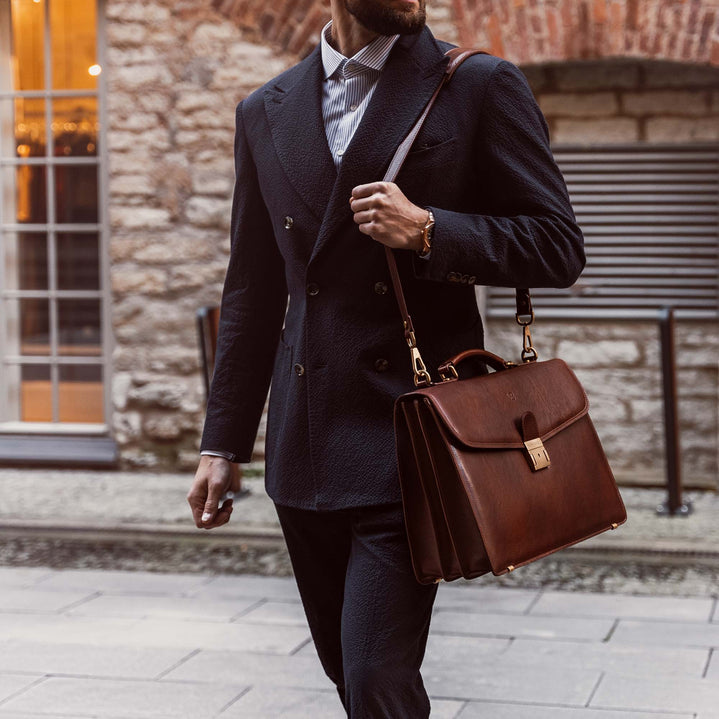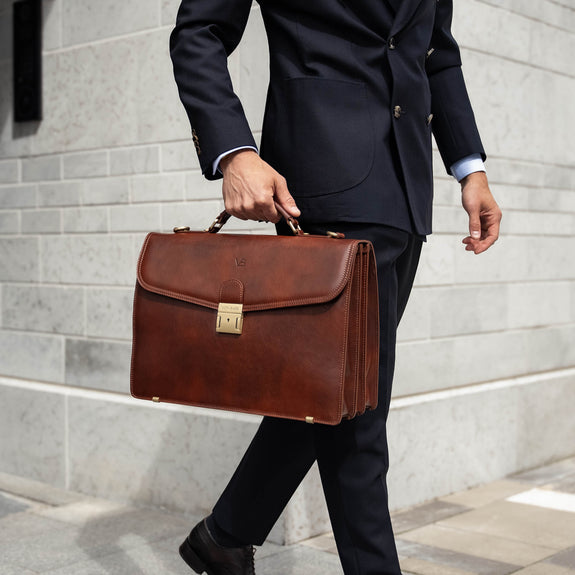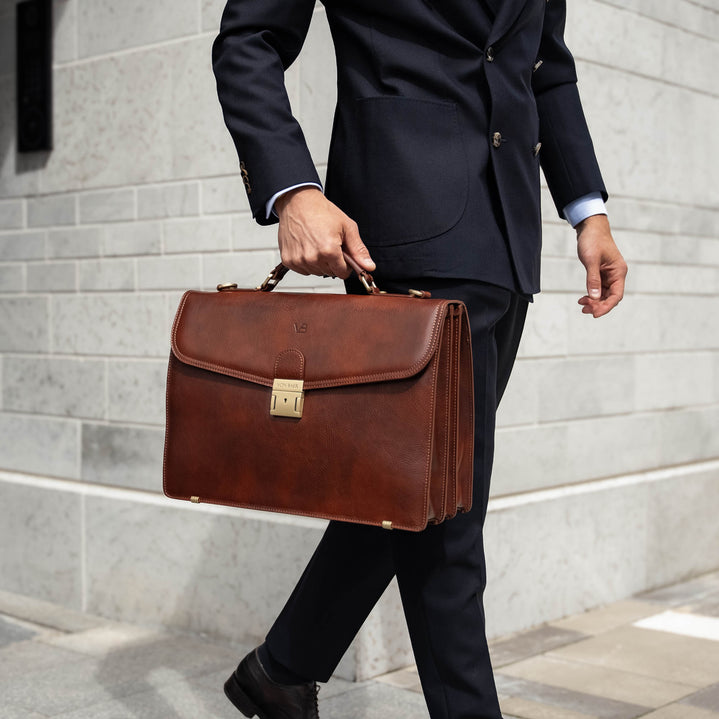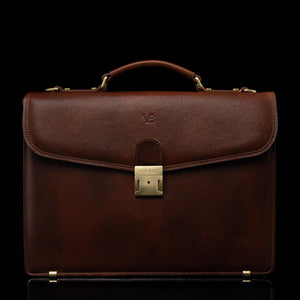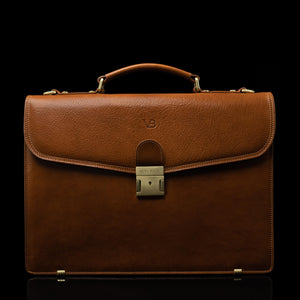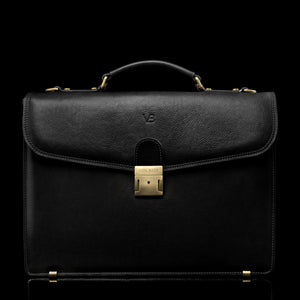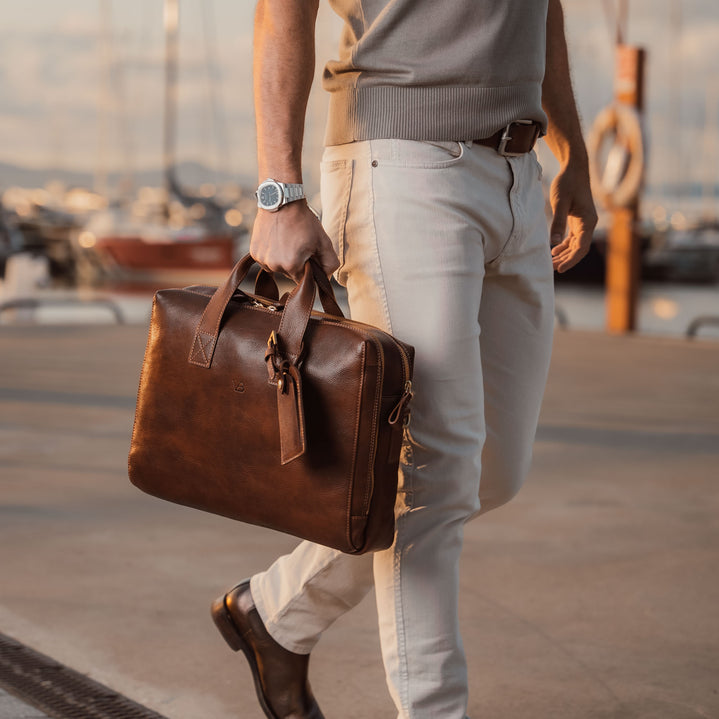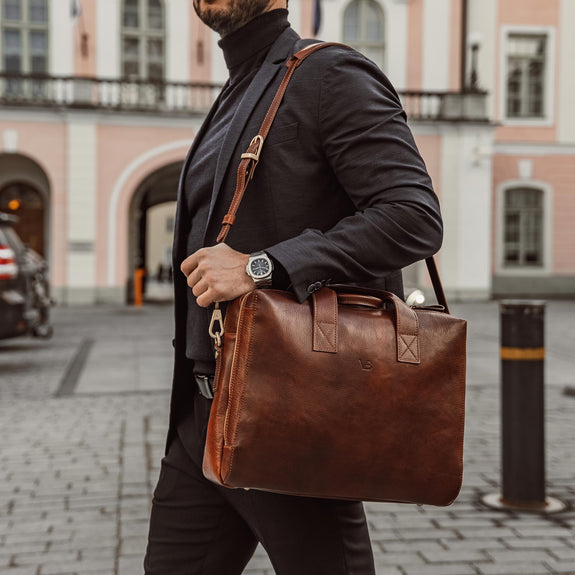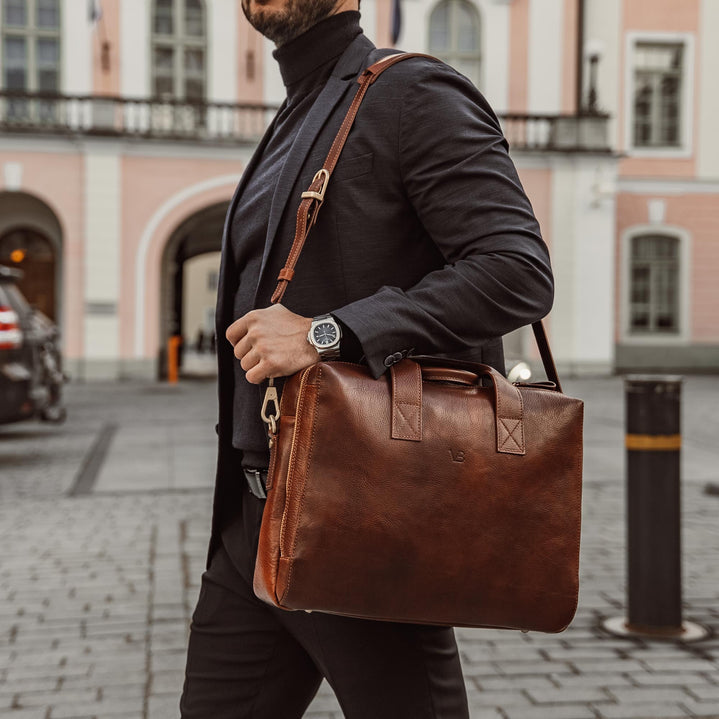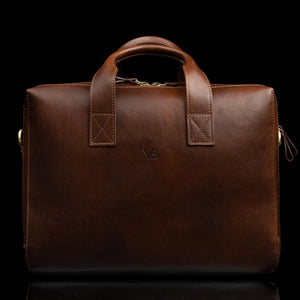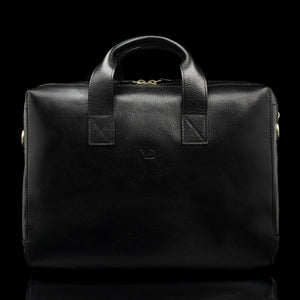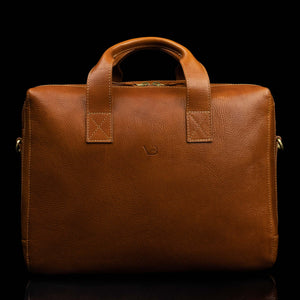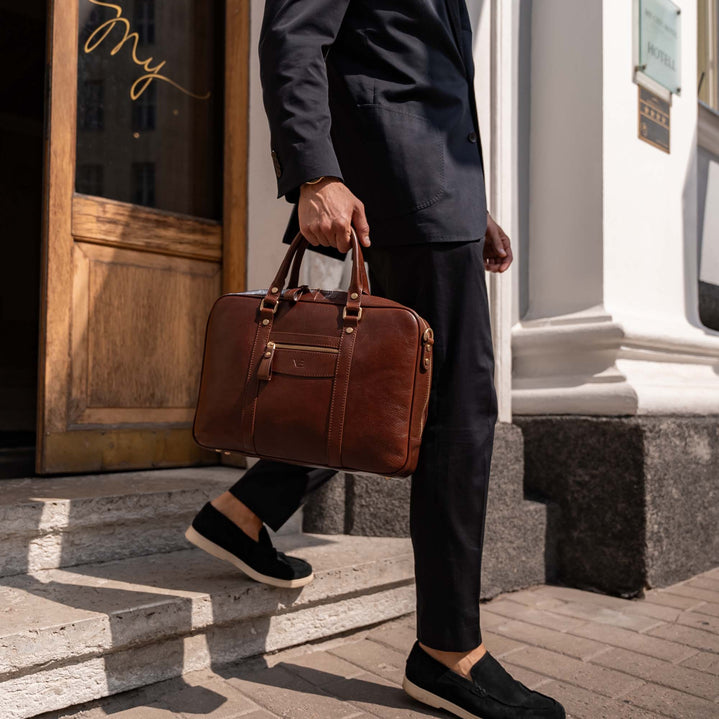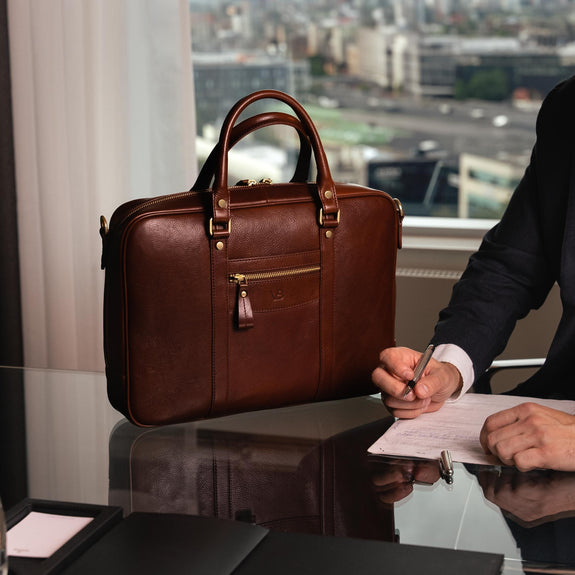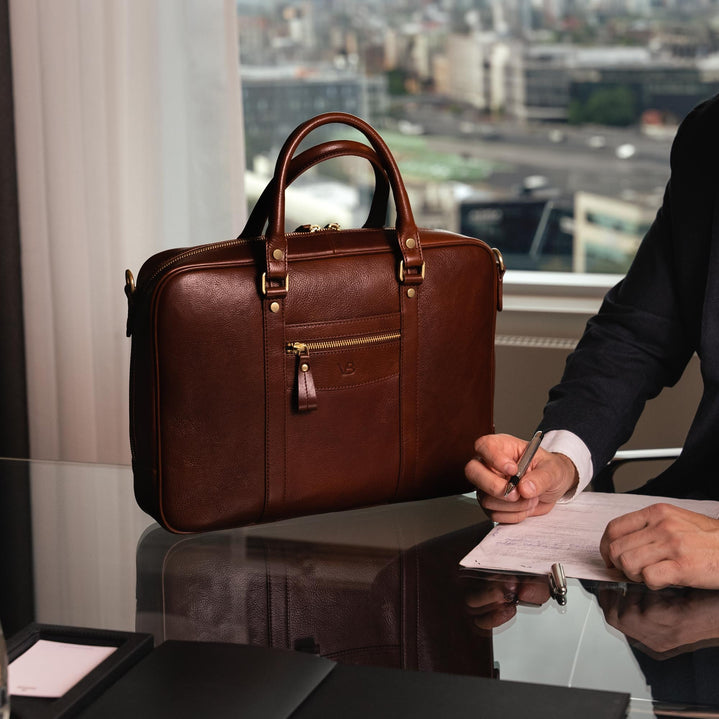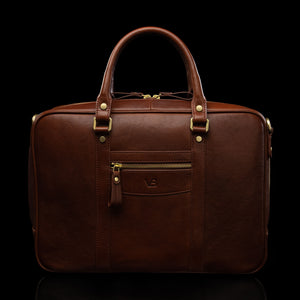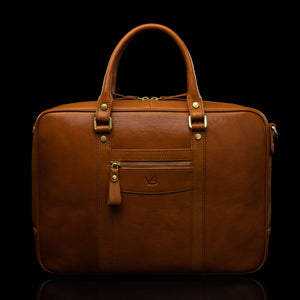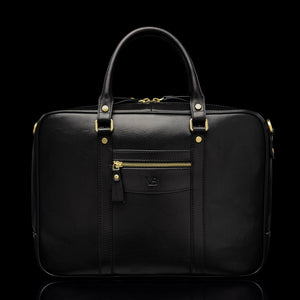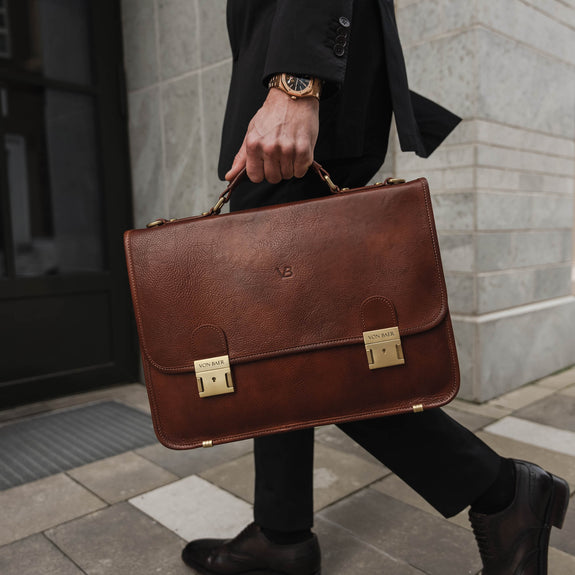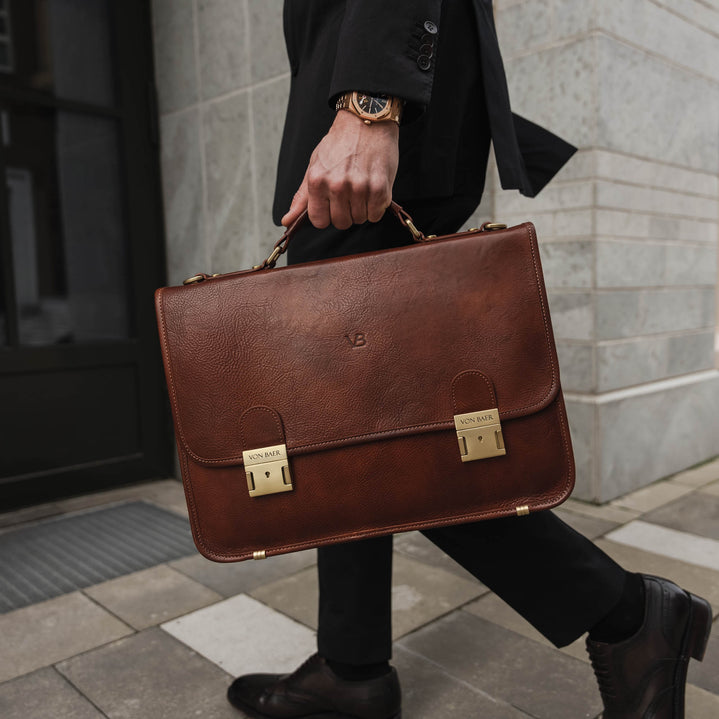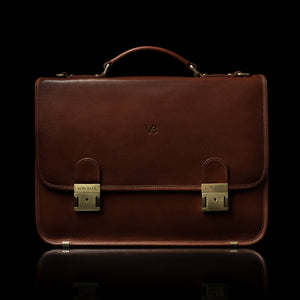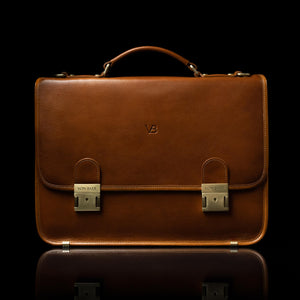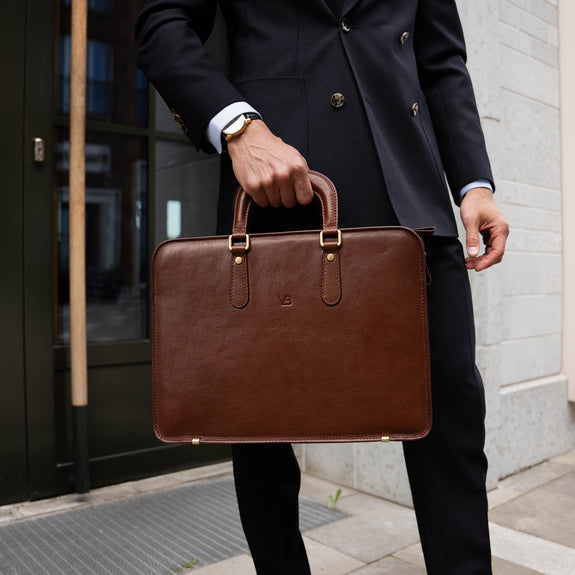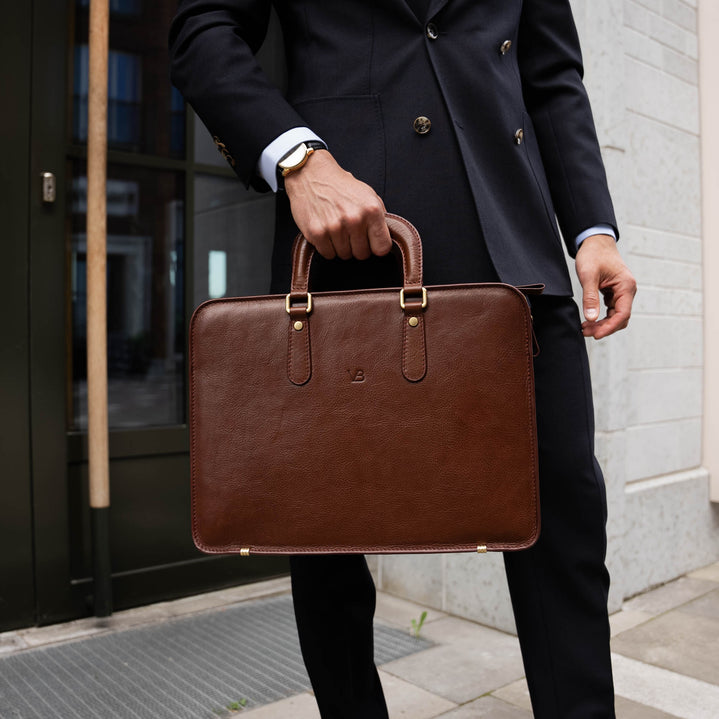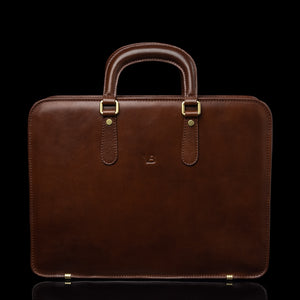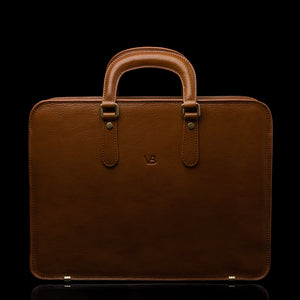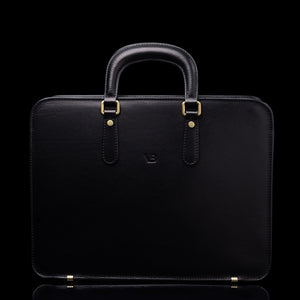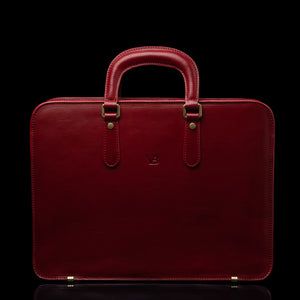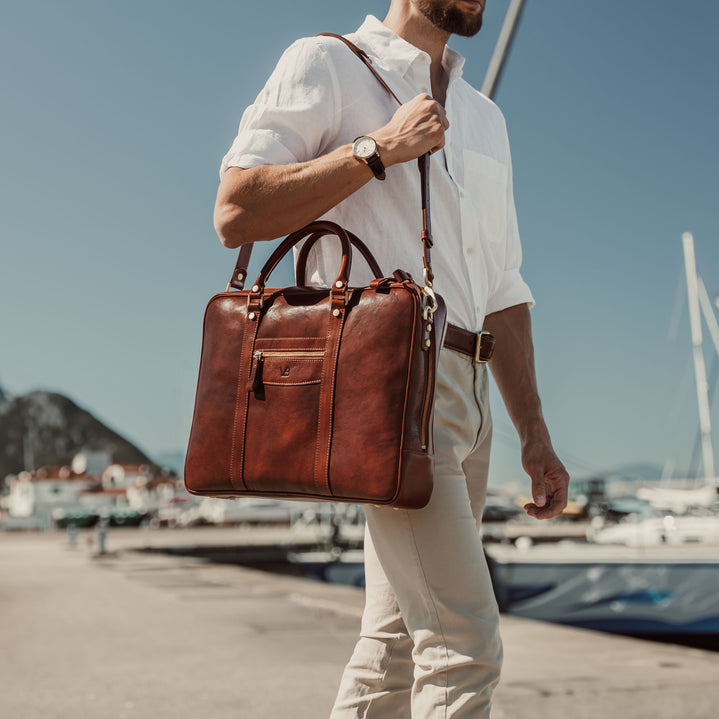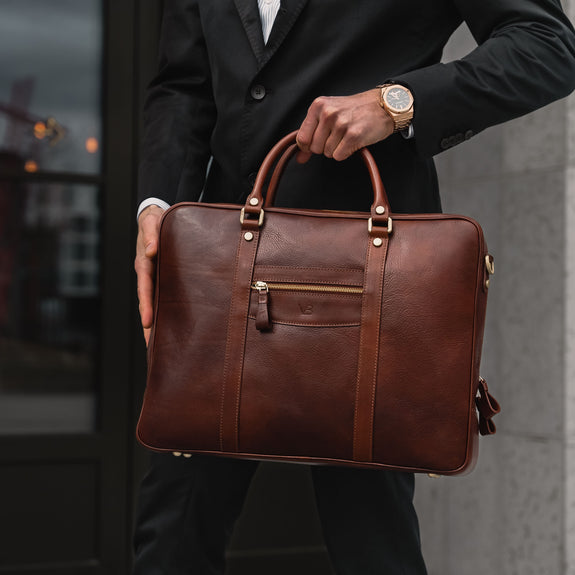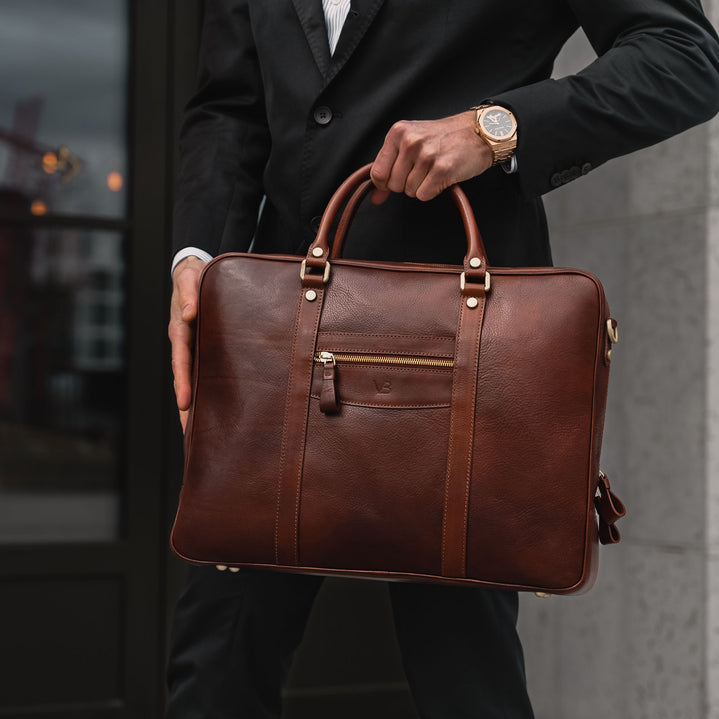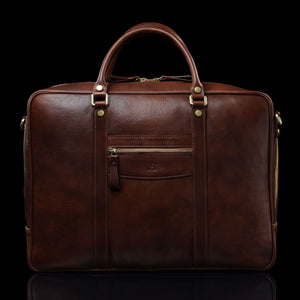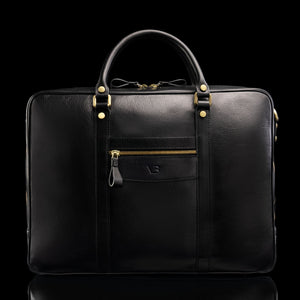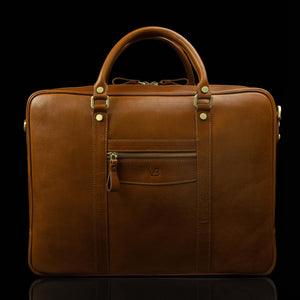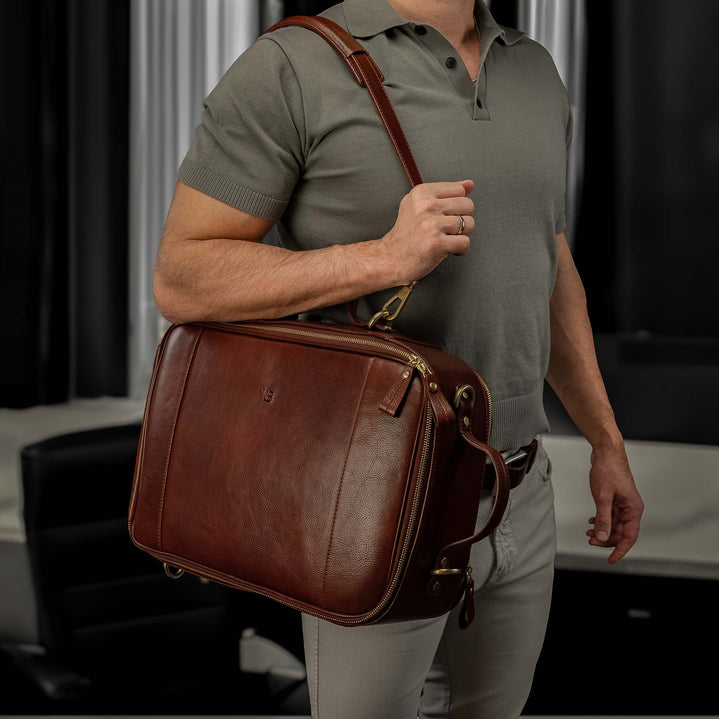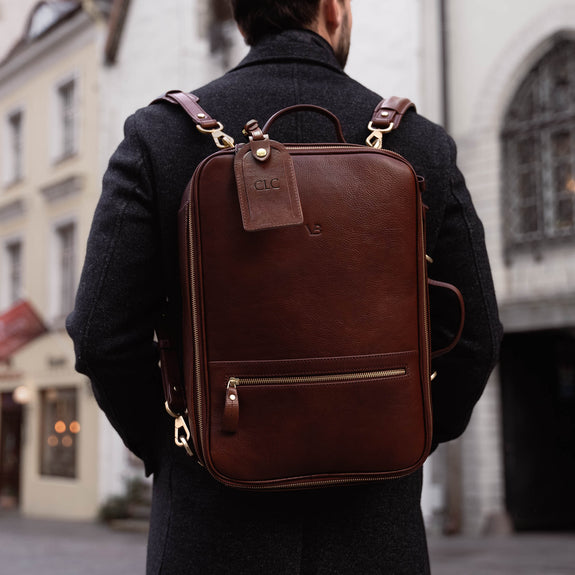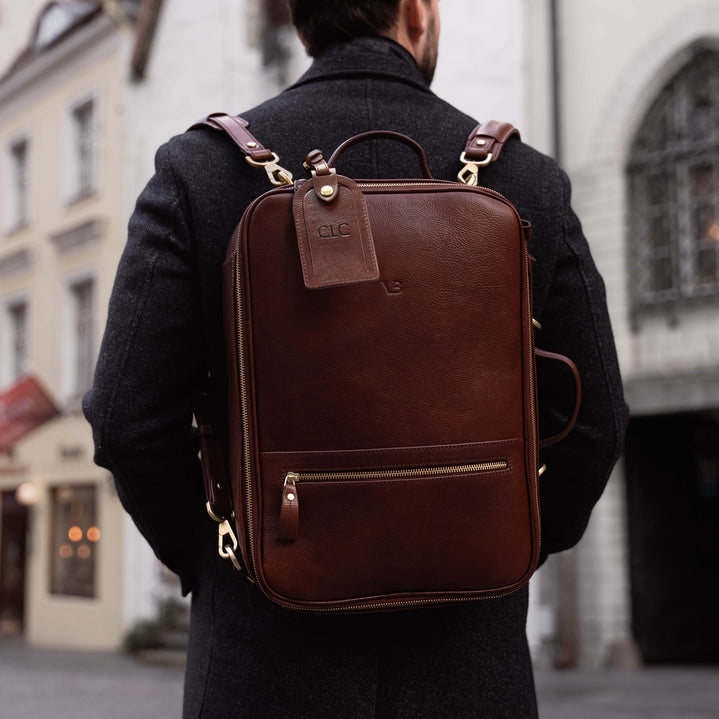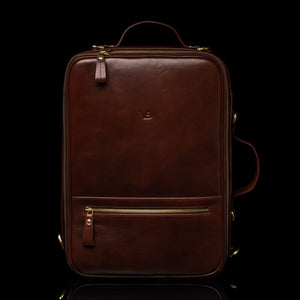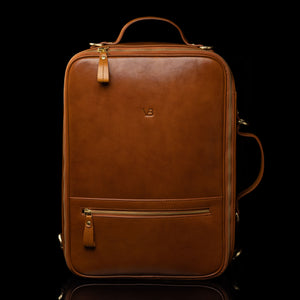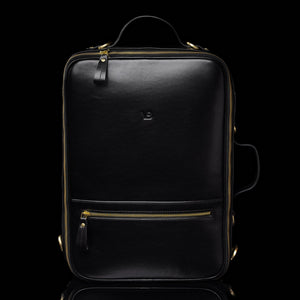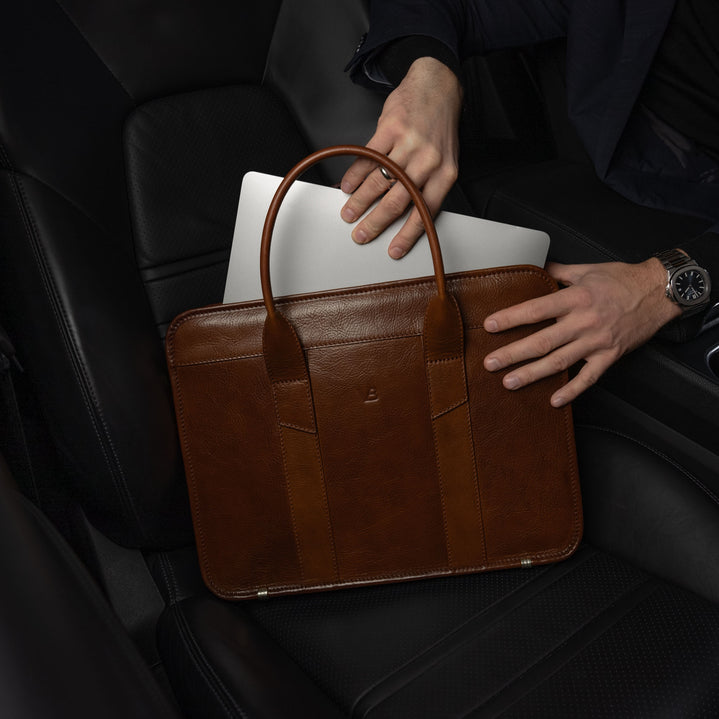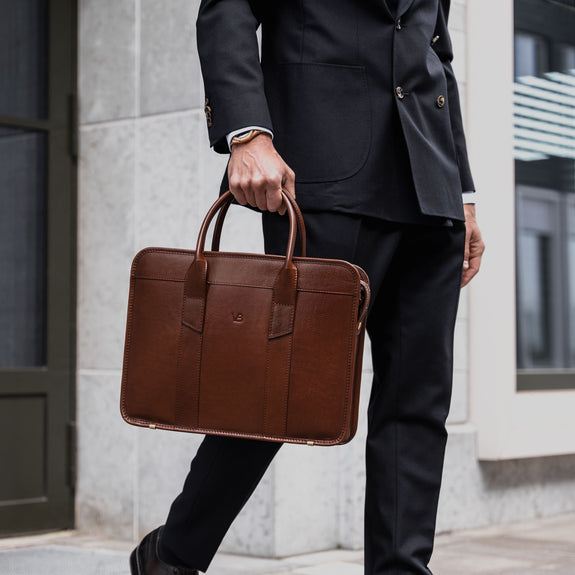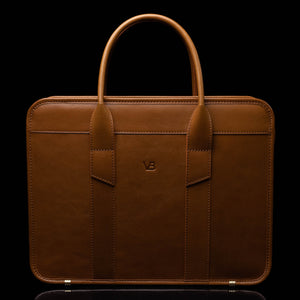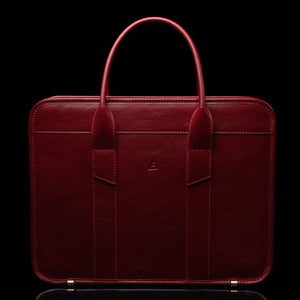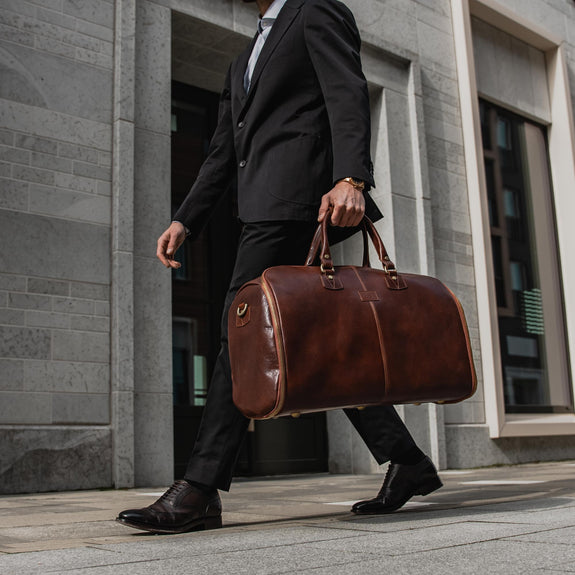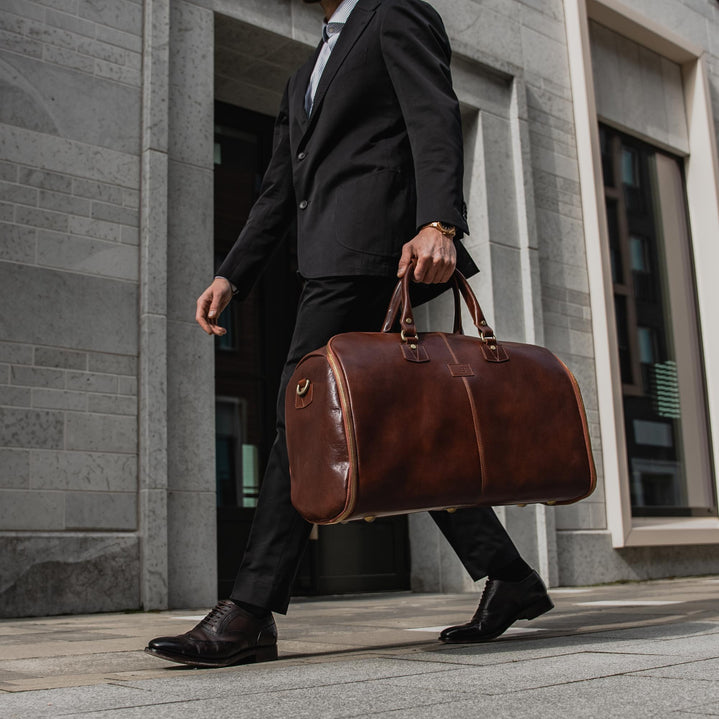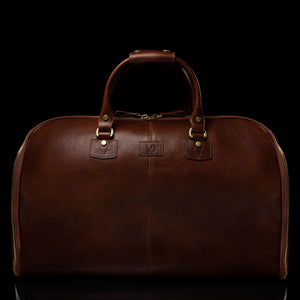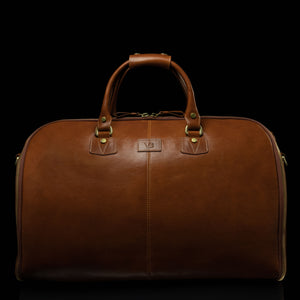Italian Full-Grain Vegetable-Tanned Leather Briefcases
Whether you're stepping into that boardroom or sealing a deal with a handshake, remember: the right briefcase says as much about your professionalism as your pitch.
Von Baer briefcases are handmade from the best full-grain vegetable-tanned Italian leather, straight from Tuscany, Italy.
No.1
Men's Leather Briefcase
$1,800
Essential
Modern Briefcase
$1,500
City
Leather Laptop Bag
$1,500
No.2
Leather Messenger Briefcase
$1,600
Elegant
Slim Leather Laptop Bag
$1,400
City Large
Leather Laptop Bag
$1,600
10X
Leather Laptop Travel Bag
$1,700
Exquisite
Slim Leather Laptop Briefcase
$1,500
Grand
Leather Garment Bag
$1,800
AS FEATURED IN




Why Choose Von Baer?

Expertly Handcrafted Leather Products

Full-Grain Vegetable-Tanned Italian Leather

Strong Hardware for a Lifetime of Use

Luxurious & Durable Cotton Lining

Personalize With Embossed Initials

Exquisitely Rich-Hued Leather for Refined Tastes
Buyer's Guide
Side eye glances and stares that last a little too long (but not in a good way). That's what happens when your briefcase stands out as being way below par. When you're dealing in the highest meeting rooms in the land, you need what you wear to match your environment, where Every. Detail. Matters.
A briefcase made from timeless Italian leather will solve this problem.
How do you actually recognize true Italian craftsmanship in a briefcase?

At first glance, every high-priced leather bag might seem similar. But seasoned collectors and style insiders know real Italian craftsmanship leaves behind a trail of verifiable cues. Let’s dissect them:
- Edge Finishing and Construction
- Expert insight: Authentic workshops use burnishing or edge painting that involves sanding, dyeing, and sealing the raw leather edges in three to five layers, with each layer allowed to dry for 12–24 hours. Run a finger along the edge: it should feel smooth and warm, never plasticky or rough.
- Pitfall to avoid: Factory-finished edges often rely on a single resin coat under 0.3 mm thick that cracks over time, creating that unsightly “frayed” look within months.
- Stitching and Threading
- Look for: Saddle stitching, often done by hand with 0.6–1.0 mm linen or polycotton thread. This not only looks refined but creates redundancy - if one stitch breaks, the seam remains intact.
- Tip for verification: Flip the bag over and check if the back side of the stitching looks equally neat. Machine-only stitching often leaves 8–10 stitches per inch (SPI), while artisanal work sits tighter at 6–7 SPI with visible depth.
- Hardware Quality
- Expert marker: Premium makers use solid brass or palladium-plated zippers and clasps, typically 3–5 mm thick for clasps and 8–10 mm coil width for zippers. High-grade hardware has a satisfying weight (50–120 g per clasp) and produces a muted “click” rather than a tinny sound.
- Shortcut: Look for Italian hardware names like Raccagni or Lampo on zippers - these brands are to briefcases what Swiss movements are to watches.
- Leather Grain and Aroma
- Test: Real full-grain leather is typically 1.4–1.6 mm thick for briefcases and has micro-variations and subtle scars; overly uniform patterns often indicate embossed “corrected” hides.
- Sensory clue: A brief, earthy aroma that doesn’t smell chemical is a dead giveaway of vegetable-tanned Italian leather, produced with tannins from oak, chestnut, or mimosa.
Why this matters: A briefcase with genuine artisan-level detailing will survive 10–20+ years of daily use, maintain structure under weight loads of 3–5 kg, and retain the dignity of age. Those details translate into decades of use rather than a few fashion seasons.
We have a full comparison of the best leather briefcases here.
Once you’ve mastered spotting true craftsmanship, the next expert move is understanding how the leather itself will age - because longevity and character are where luxury really earns its value.
Will this briefcase age beautifully or start to degrade after a few years?

The patina story separates a true heirloom from a disposable accessory. Italian leather isn’t just about initial beauty; it’s about how it records your life over time. Here’s how to evaluate that future before you buy:
- Identify Leather Type
- Full-Grain Vegetable-Tanned: The apex choice. Thickness typically 1.4–1.8 mm, softens naturally within 6–12 months of regular use, and will last 15+ years. It will gradually develop a glossy sheen and deepen in color. Learn more about it here.
- Top-Grain: 1.2–1.4 mm thick, sanded and corrected; smoother and slightly more uniform. It may resist scratches at first but rarely develops the same rich patina. Not recommended.
- Coated or Split Leather: Often 0.8–1.0 mm, laminated with polyurethane. Avoid for investment; it will crack, peel, or fade unevenly within 2–3 years.
- Visualizing Longevity
- Imagine your bag in year five. A quality Tuscan full-grain will have softened without losing shape, corners will darken slightly, and handles will feel “broken in” like a trusted steering wheel in a vintage car.
- A mass-market leather will show edge splitting, bubbling of laminated finishes, or stiffness, especially at gussets and handles.
- Pro Maintenance Tip
- Rotate use if possible and store with a breathable cotton dust bag and paper or foam stuffing to maintain 3D shape.
- Use pH-balanced leather conditioners (pH 4.5–5.5) once or twice a year; avoid silicone sprays that suffocate the hide and prevent patina.
Significance: Your purchase is not just about how it looks out of the box - it’s about owning a piece that will look better after 500+ boardroom carries and 100,000+ air miles.
Does this luxury briefcase strike the right balance between confidence and subtlety?

A luxury briefcase is a non-verbal introduction. The wrong choice can feel like either invisibility or overcompensation.
- Industry-Appropriate Tones
- Corporate or Legal Environments: Stick to black, deep espresso, or oxblood. Bags typically measure 15–17 inches wide, 11–13 inches tall, 3–5 inches deep. Matte finishes with brushed hardware convey gravitas.
- Entrepreneurial or Creative Fields: Consider warm tan, cognac, or pebbled textures. Hardware in brushed nickel or antique brass gives distinction without shouting.
- Hardware and Logo Discipline
- Oversized chrome logos can undermine authority. Opt for logos under 1 cm², preferably heat-embossed or foil-stamped.
- Pro tip: Handle drop lengths of 3.5–5 inches strike the right balance between hand-carry comfort and professional silhouette.
- Visual Weight and Silhouette
- Structured multi-gusset bags (3–4") project decisiveness and hold their boxy shape.
- Slimline single-gusset (2–2.5") styles feel modern but risk distortion when carrying more than 3–4 lbs (1.5–2 kg).
Real consequence: Colleagues, clients, and investors read your bag as an extension of decision-making style.
With style sorted, ensure the functionality won’t betray you in daily professional life.
We have a more detailed guide on briefcase materials here.
How Is Von Baer Leather Different?
Not all leather is the same.
Since 2015, we at Von Baer have dedicated ourselves to high-quality real leather.
Here's a 30-second summary of how to choose a better leather product:
- Leather comes in different grades: full-grain, top-grain, and split/bonded - which represent how much of the original product is used (less product used = cheaper).
- Full-grain is the best grade of leather you can buy: exceptionally durable, developing an elegant patina, and having that beautiful real leather smell.
- Cheaper grades are less durable, age poorly, and don't have that authentic scent.
- Leather is processed through "tanning", which makes it durable and water-resistant.
- The two main methods for this are "vegetable-tanning" and "chrome-tanning".
- Chrome tanning uses harsh chemicals that are bad for the environment and produce a worse quality leather.
- Vegetable tanning is the best method, being more eco-friendly, and producing leather with a better patina and scent.
That's why here at Von Baer, we only use full-grain vegetable-tanned Italian leather, sourced from the finest tanneries across Tuscany, Italy.
It ages beautifully over time, developing a unique patina, making it more durable and luxurious than lower-quality leather.
It's also why we developed the leather standards trademark Cuoio Superiore (meaning "superior leather" in Italian).
Learn more about Von Baer here.

